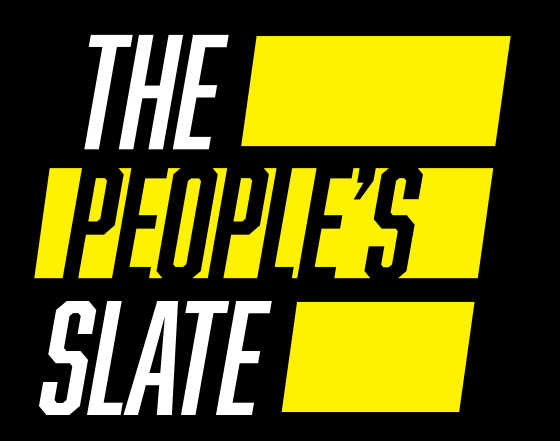The Need for Transparency in Rochester Policing
On Christmas Eve morning, December 24, 2023, Todd Novick was murdered by Officer Daniel Celiberti while he (Celiberti) was on patrol for the Rochester Police Department.
In the body cam footage released by RPD shortly after the incident, Celiberti, who was responding to a call from a “concerned citizen,” gets out of his vehicle to ask Novick what he’s doing. Novick runs. As Celiberti gives chase, the video freezes on a frame showing Novick having pulled out what appears to be a hand gun. Audio of the officer’s shots play over this freeze-frame.
This is not, of course, the whole story.
In February of 2024, Attorney General Letitia James released the full cut of this footage, which goes on for another 20 seconds. During the extended cut, we see Celiberti shoot Novick in the back. As he’s being handcuffed, we hear Novick say “I was trying to put it down. I was trying to put it down. I’m sorry.” Novick died shortly thereafter.
That a member of our community was executed for the crime of running from an officer and possessing a BB gun is a tragedy—those responsible must be held accountable so further tragedies of this sort might be prevented. But how can we expect anyone to be held accountable when the information presented to the public doesn’t reflect the truth?
Rochester City Councilmember Stanley Martin raises important questions about the initial footage presented by the RPD:
“That version, the one the RPD released, was cut, edited to exclude certain audio, slowed down at times, and highlighted to emphasize the department’s assertions about the incident…why was there a decision made to cut out those last 20 seconds and by whom?”
Councilmember Mary Lupien asserted the same point; she, too noticed inconsistencies in how decisions about what to cut or include get made:
“It feels like [the RPD’s image is] the deciding factor, whether those final seconds make the police look good or if they make them look bad, and if they make them look bad, it gets cut.”
The idea that the RPD may be selectively releasing footage in order to skew public opinion in their favor would appear to go against the stated goals of their Body-Worn Camera initiative. According to the RPD’s website, one of the primary goals of the BWC initiative is to “Improve the quality of public service and promote the perceived legitimacy, sense of fairness and procedural justice the community has about the RPD.” The weaponization of body camera footage, and intentional edits to hide information is in complete contradiction of the stated goals of the BWC program.
As things stand, BWC footage exists to be used as the RPD sees fit in order to make it seem like they are legitimate, fair, and exhibit procedural justice when working in the community, regardless of whether any of that is true.
RPD’s blatant lack of cooperation with the Police Accountability Board’s attempts to carry out its function give further evidence to the idea that the RPD’s primary concern is avoiding accountability at all costs.
In 2023, the Policy & Oversight division of Rochester’s Police Accountability Board attempted an investigation of 1,100 interactions in which Rochester police used force against juveniles (under the age of 17). During this investigation, the PAB “faced barriers caused by lack of access to information and data as RPD and the city of Rochester law department determined what could and could not be turned over.”
In the end, their investigation had to be narrowed to 318 interactions—RPD provided body-camera footage for only two of these.
Limited as the scope of the study was, the PAB was able to uncover some unsettling trends about the ways in which the RPD chooses to use force against minors.
Force was used against juveniles ranging from 2 to 17 years of age.
30% of the interactions involved mental health crises.
80% of the interactions involved black children; most of those were males.
Handguns were pointed at children in 27% of these interactions.
Nearly 60% of the documented interactions occurred in the Clinton and Lake patrol sections.
The most impacted zip code was 14621—20% of the interactions occurred here.
General Order 338, which governs juvenile use of force, does not contain guidance related to the use of firearms in these instances, nor does it prohibit or allow any specific use of force techniques. Nor does it give any guidance regarding a juvenile witnessing use of force against parents or guardians.
The PAB’s report on this subject was explicitly informative—no recommendations were made. It is clear, however, that reform is needed, both in the way the RPD chooses to execute their mission to protect and serve Rochester’s residents, and the ways in which they engage with good faith efforts to hold them accountable for improving the quality of the public service they’re charged with providing.
The City of Rochester established the PAB for a reason—to bring accountability and transparency to the work of the RPD through an independent body led by everyday people. In order to achieve this purpose, the PAB must have direct access to the footage captured by officers’ body-worn cameras. Limiting this access, whether done by RPD, City Law, or anyone else, undermines the vital work the PAB was established to conduct—that cannot continue to happen. Providing this access is a simple and achievable step our City can take toward bringing real transparency and accountability to policing in Rochester.



